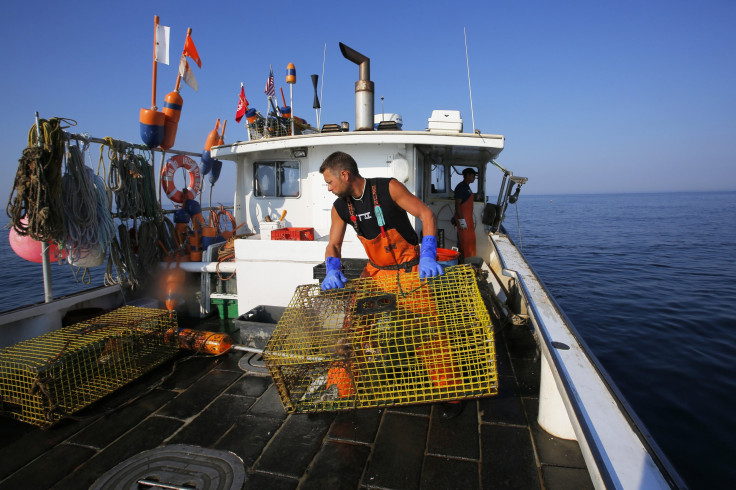Lobster Boat Captain Had Marijuana And Oxycodone In His System When His Boat Flipped Over, Killing 2 Crewmembers

A Cushing, Maine, lobster boat captain had marijuana and oxycodone in his system according to blood tests performed at a local hospital after two crewmembers died aboard his ship under his watch, federal prosecutors said Monday.
Christopher Hutchinson, 28, was arrested and charged with seaman’s manslaughter after his 45-foot boat, the No Limits, capsized amid a violent storm on Nov. 1, 2014, leaving Tomas Hammond, 26, and Tyler Sawyer, 15, dead, the Washington Post reported Monday.
"The indictment alleges that his negligent and unsafe operation of the boat in forecasted dangerous weather and sea conditions and after using controlled substances and alcohol caused the loss of life," the U.S. attorney's office in Portland said.
Seaman’s manslaughter is a law that was created in the early 1800s that federally criminalizes a ship officer’s misconduct or negligence if it results in a crewman’s death. Hutchinson pleaded not guilty in his first court appearance Monday. He faces 10 years in prison and a $250,000 fine if convicted.
The bodies of Hammond and Sawyer never were recovered. The boat sank several miles off the mainland. The Coast Guard was able to rescue Hutchinson after spotting him clinging to a raft.
Maine lobster boat captain who lost two crew members when vessel capsized was drunk and high, prosecutors charge https://t.co/RoBGK4IsXi pic.twitter.com/P3wsh3stDk
— New York Daily News (@NYDailyNews) December 20, 2016
Hutchinson and the crewmen had been inspecting their 15 lobster traps at 11 Mile Ridge, a popular spot among lobster fisherman off of the coast of Maine, for several hours before the weather turned nasty. Hutchinson was attempting to “surf” the formidable waves despite radio warnings from National Weather Service that should have kept them from heading out to sea that day, the Portland Press Herald reported. He said the weather prompted him to steer his boat back to shore, but the waves had grown to more than 10 feet and became insurmountable, eventually causing the boat to turn over. Neither Sawyer nor Hammond was wearing safety equipment when the storm’s waves crashed through the window of the boat’s cockpit at 11 a.m. and inundated the deck.
Hutchinson said he wasn’t concerned about the weather when the three men left the dock that morning because he had fished the 11 Mile Ridge for six years and had a large vessel. He said when they left the dock that morning there wasn't any wind, but when they decided to head in, the wind had picked up to 22 knots.

“We got hit by one large wave, and that pushed us into another," Hutchinson told local reporters. "The windows to the wheelhouse blew out, and we began taking on water quickly. I’m not 100 percent sure what happened next, but the next thing I recall is being in the wheelhouse and the boat is upside down in the water. I kept screaming for Tom and Tyler, but I didn't hear or see them again.”
Hutchinson said he survived the crash by holding onto pipes at the bottom of the boat after it had flipped over. Two hours after the capsizing, he said he found a life raft and held onto it until being rescued around 4:30 p.m. after being spotted by a helicopter. The helicopter’s pilot responded to a flare Hutchinson fired and lifted him out of the water. The helicopter then flew Hutchinson to a nearby hospital where doctors took a sample of his blood and discovered traces of oxycodone and marijuana in his system.
Prosecutors said the captain had had alcohol and consumed both drug substances the night before his fatal fishing expedition.
After conducting a 17-hour search of the area where the two crewmen went missing, local police officials declared Hammond and Sawyer lost at sea.
Commercial fishing was one of the most dangerous jobs in the U.S. with a fatality rate 39 times higher than the national job average, according to a 2014 Centers for Disease Control and Prevention report.
© Copyright IBTimes 2025. All rights reserved.






















